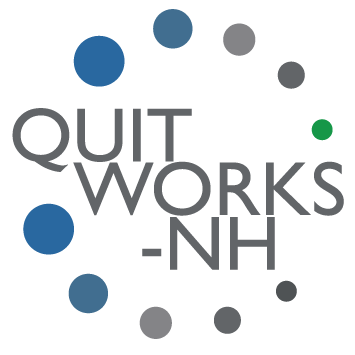Nicotine Treatment for Youth Patients
E-cigarettes are not safe for youth, young adults, people who are pregnant, or adults who do not currently use tobacco products. While e-cigarettes may benefit adults with tobacco use disorder if used as a complete substitute for regular cigarettes and other smoked tobacco products, e-cigarettes are not harmless.

What Are E-Cigarettes?
E-cigarettes are known by many different names. They are sometimes called “vapes,” “mods,” “e-cigs,” “e-hookahs,” “vape pens,” “tank systems,” and “electronic nicotine delivery systems.” E-cigarettes produce aerosol by heating an oily liquid that most often contains nicotine, flavorings, and other chemicals. People who use e-cigarettes inhale this aerosol into their lungs, and bystanders can also breathe in this aerosol when it’s exhaled into the air.
It is difficult for consumers to know exactly what e-cigarette products contain, and more research is needed on the impacts of combining, heating and inhaling the substances found in them. E-cigarette aerosol generally contains fewer toxic chemicals than smoke from regular cigarettes, but they still contain harmful substances including nicotine, heavy metals like lead, volatile organic compounds, and cancer-causing agents.
E-Cigarette Use Among NH Youth
Historically cigarette smoking has been the leading cause of preventable diseases, but studies show more youth are using e-cigarettes or vaping than are smoking cigarettes. The most recent national survey of youth risk behaviors reported that 2% of high school students smoked cigarettes in the past 30 days, while 14.1% used e-cigarettes in the past 30 days (CDC, 2022).
Nicotine–found in 99% of e-cigarette products–is highly addictive and can harm adolescent brain development, which continues into the mid-20s. It benefits vape and tobacco companies to hook customers early.
- Teens who use e-cigarettes are four times more likely to smoke cigarettes or use other forms of tobacco.
- Almost 90% of adults who use nicotine started as teens.
- Even when marketed as containing zero percent nicotine, some e-cigarettes have been found to contain nicotine.
The United States and New Hampshire have seen a significant decline in e-cigarette use since the pandemic. While less high school students in NH reported using an electronic vapor product, decreasing from 33.8% in 2019 to 16.2%% in 2021, this is more than the national number of 14.1%.
Strategies for Healthcare Professionals
Healthcare professionals play an important role in educating their young patients about the dangers of using e-cigarettes. In 2021, 48.5% of high school students in NH who use tobacco products tried quitting (NH YRBS, 2021). To provide advice and support to quit, healthcare professionals should first routinely screen their patients for vaping or tobacco use. It’s critical to talk with youth patients about their use at every visit.
The American Academy of Pediatrics (AAP) has developed comprehensive information about how to prevent and treat tobacco use among teens. One of the AAP recommendations is to promote and proactively enroll teens who use tobacco in cessation programs. New Hampshire has a tobacco (including e-cigarettes) quitline just for teens known as My Life, My Quit.
In addition, healthcare professionals should:
- Educate teen patients who have never used tobacco products or e-cigarettes on the health benefits of never using them, and encourage them to never start.
- Have a conversation with your teen patients who do use tobacco products or e-cigarettes.
- Let them know you are concerned about the impact of their use on their current and long-term health.
- Tell them you want to support their plan to stop. Encourage them to sign up for the free, confidential My Life, My Quit program. If your patient is ready to get started, they can text, call, or enroll online.
- If your patient is not willing to quit, provide them with information about how to enroll and let them know they have support when they are ready.
- While Nicotine Replacement Therapies (NRT) are not approved for those under 18 years of age, the AAP recommends that healthcare professionals consider off-label NRT for youth who are moderately or severely addicted to nicotine and motivated to quit.
- Complete our free, on-demand eLearning module to learn what local experts say about supporting young people to quit vaping.
eLearning Module: Talk with Your Young Patients about Vaping: Hear What Experts Have to Say
QuitWorks-NH has developed a free, on-demand eLearning module to help your young patients separate the facts from fiction when it comes to vaping. NH experts share strategies, resources and straight-forward facts to start conversations with your young patients.eLearning Module: Youth Vaping Basics
QuitWorks-NH has developed a free, on-demand eLearning module to educate about key facts about the types of vaping products (e-cigarettes) currently available and the chemicals they contain, why youth are attracted to vaping, and the impacts of vaping on youth mental and physical health, including brain development.
Additional Resources
